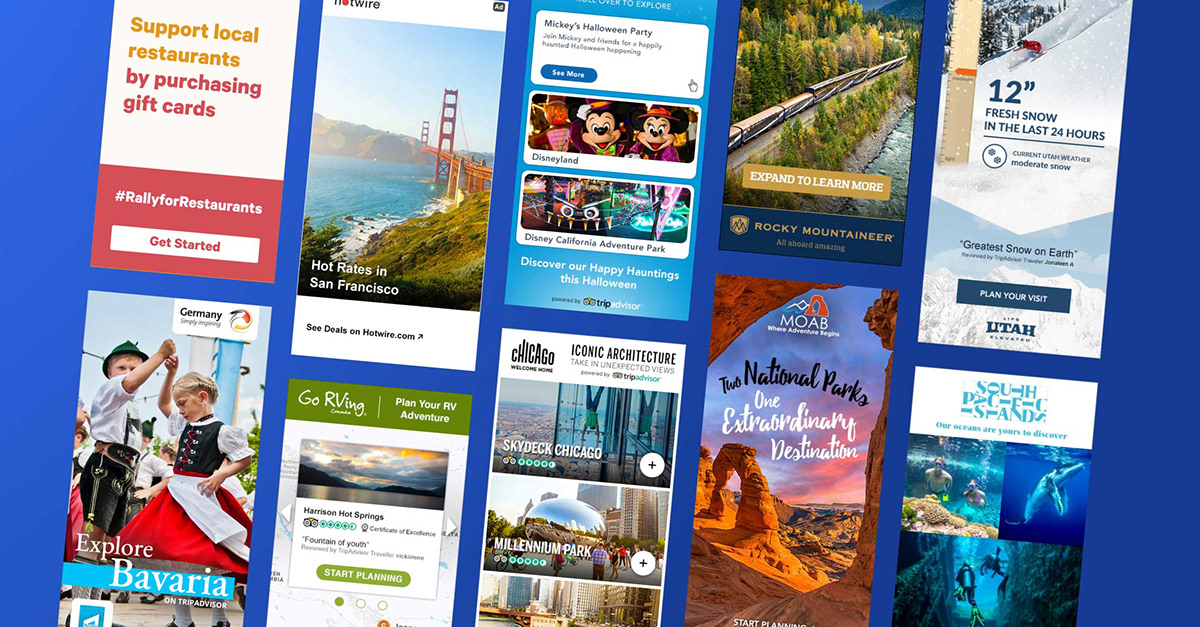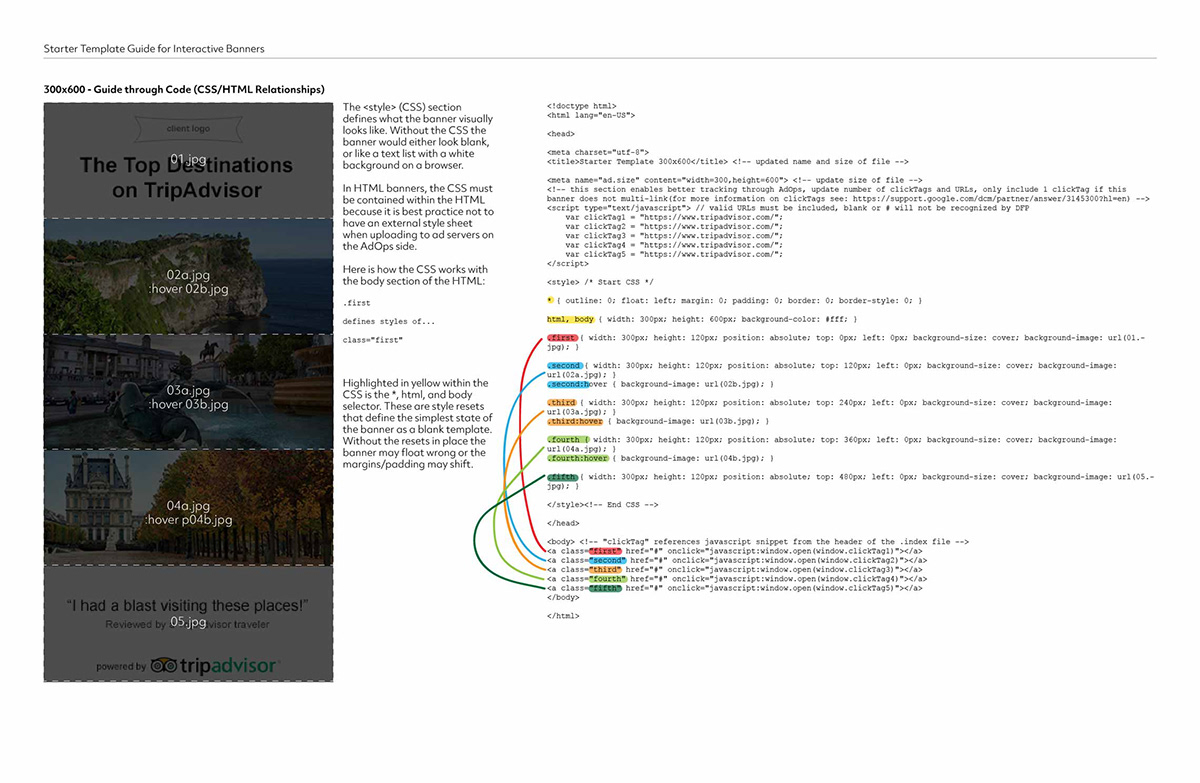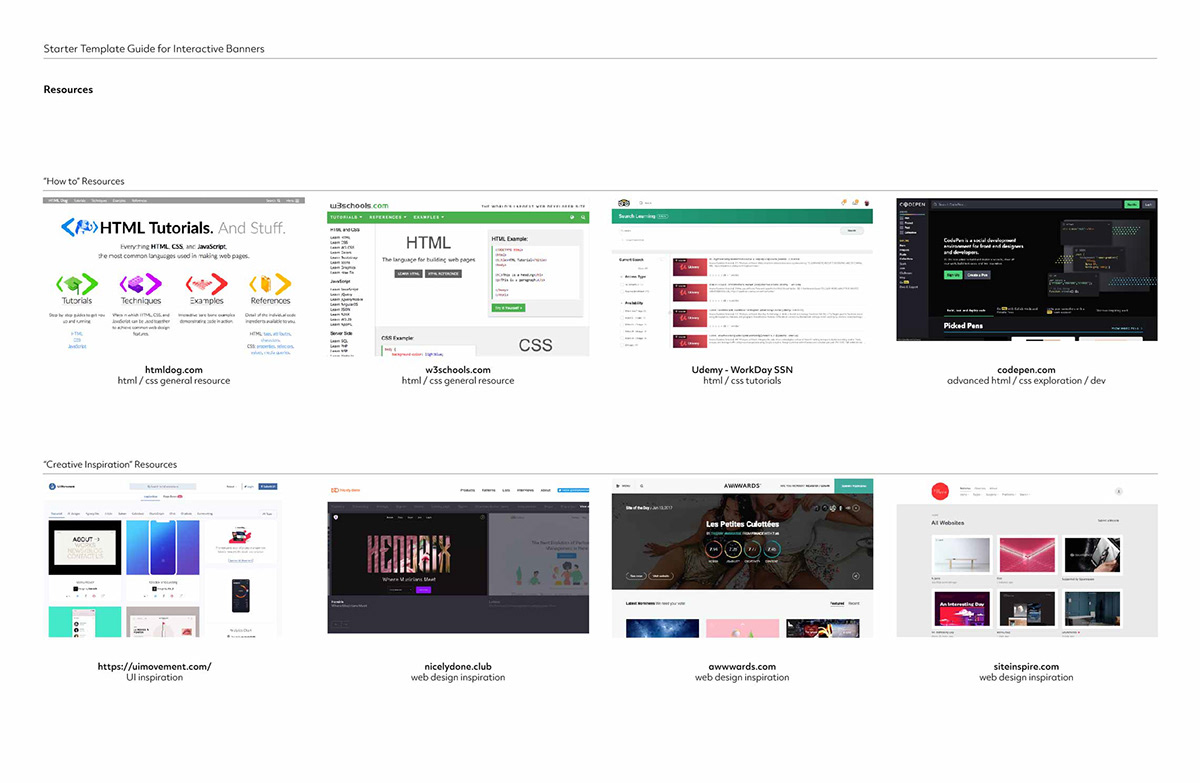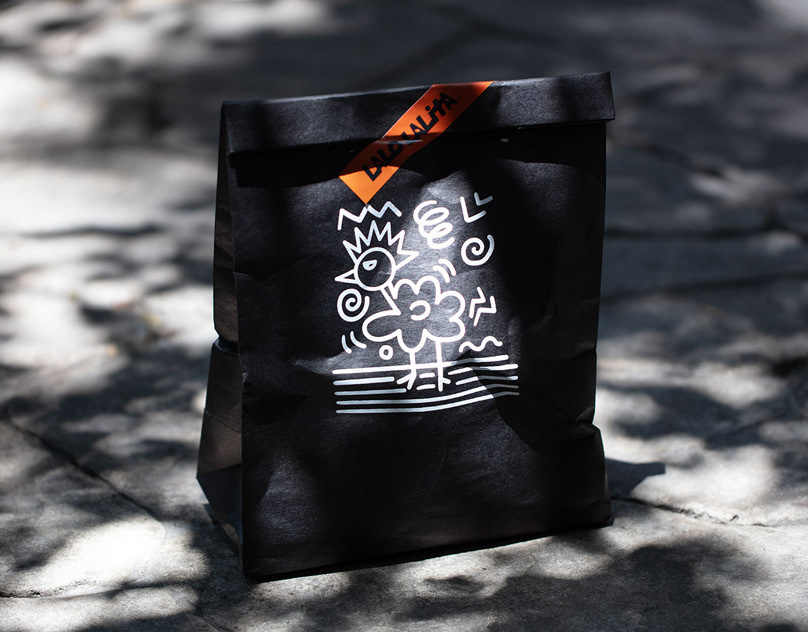Display advertising at Tripadvisor

Introduction
From 2015 through 2020 I worked within the Digital Display Advertising Team at Tripadvisor. Below is the story and process through which I led efforts to evolve ordinary banner ads into extraordinary product offerings that drove more than five million dollars in revenue over just a couple of years.
Saying bye to Flash
In 2015 Flash ActionScript 3 (AS3) dominated most of the advertising market. However, around this time Apple and Google announced that they would be depreciating support for flash based experiences in preference for HTML/rich media experiences. Other acceptable ad formats were JPG, PNG, and animated GIF banners, widely known as ‘static’ banners.
Prior to my career at Tripadvisor I taught myself front-end development (HTML and CSS). My knowledge of front-end languages and how digital experiences were built propelled the manner in which I could support the Digital Display Advertising Team through the transition from flash to HTML. Toward the end of 2015, most banners the team created were based in front-end languages or static.
More data is good data
One of the benefits of HTML banners was the opportunity to build reporting ability into the banner’s code. In the beginning of the transition from flash to HTML I led brainstorms in collaboration with the ad operations team to develop a solution that worked in alignment with Google’s ad management platform (doubleClick). The result of our brainstorms was the development of code snippets that allowed for more in-depth reporting on click-through-rates (CTR) and a strategy for placing and measuring pixels placed on the client’s webpage(s).
Innovations
With millions of Monthly Users (MUs) on Tripadvisor, it may seem like a no brainer to get clicks on banners, but it can be challenging just to grab the attention of a small percentage of users and entice them to click and explore advertisements. This challenge pushed the project managers, sales, and designers from around the world to team up and develop a solution. Up to this point most banners on Tripadvisor contained just one click area. Measuring the CTR of just one click area provided some insight into the behavior of Tripadvisor’s users, but with multiple click areas within one banner there could be deeper and more meaningful performance data collected. For example, if a client like Bermuda Tourism approaches Tripadvisor looking to advertise both their beaches and eco-tourism, then Tripadvisor could provide them with a banner with multiple click areas that measures the number of users clicking on both beaches and eco-tourism separately. Also, if Bermuda had a separate webpage for beaches and eco-tourism, then each click area could send the users to separately defined pages.
Seeing how there could be unlimited variations of layouts within the standard Iab banners sized I teamed up with the ad operations team to develop guidelines around formatting and standardizing requests.
Third-party vendors
The advertising team was often tasked with building robust banner campaigns. One solution to produce the banner creatives was to outsource the production to third-party vendors. In 2016 I sought to change this process and bring most production work back in-house for the internal team to develop. There were immediate positive results, time savings and budget wins.
Bringing the process in-house created timeline efficiencies within every project. From start to finish, each project’s timeline was reduced by up to 50% or more as the result of the transitioning to in-house production. For example, if a vendor is developing assets, it may take one to two days to handoff project requirements in the form of countless meetings. In addition, the development of the first iteration of the project could take one to two weeks and every subsequent change request could take additional time. With an internal process, the project handoff became a simple standup brainstorm session and the first iteration of the project could be complete in one to five work days. Future iterations would be almost instant which led to clients having more confidence in initially agreed upon timelines.
There are immediate savings in each project's budget. For example, vendors require long term contracts just for the privilege of working with them. Also, each project and change request accrued additional changes. With the transition to in-house production, there were no more unexpected fees or charges.
With production transitioning to in-house there was a notable shift in communication which became more clear and instantaneous. Gone were the times of having to set up long calls with multiple vendor stakeholders. The vendor kickoff conversations developed into internal stream-lined conversations and brainstorms between project managers, designers leads, and clients.
The need for scalability
As rich media banner requests became more complex, the need for more robust creative solutions arose. For most campaigns from 2015 through 2018 rich media banners were built within either a code editor or Google Web Designer (GWD). It was clear that while there were solid solutions for developing banners, a better solution needed to be vetted and adopted to support global audiences with different needs. There was a growing need for dynamic banners that targeted users with personalization based on location, language, site behavior, and even local/destination weather.
In 2019 the ad team vetted and adopted Celtra. Celtra became the primary tool that solved how the team created robust experiences. The additional benefits of Celtra were that the team could build dynamic experiences with the ability to collect more performance metrics and with the ability to exist on multiple platforms. Adding scalability to Tripadvisor’s product offering was a game changer.
I led the team in creating a guide for creating the first of the HTML banners published on Tripadvisor which you can view below:













Thank you for checking out my work!






